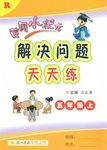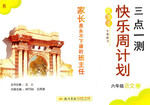题目内容
A growing number of college students are applying to take entry tests for medical and dental (牙科的) schools among increasing graduate unemployment in Korea.
“I’ve decided to apply for the test to enter a medical college to become a doctor, changing from my original plan to prepare for a lawyer qualification exam in order to get a more stable job in the future,” said a 24-year-old college graduate, Lee, who majored in business administration during his undergraduate schooling.
The new medical and dental school system is getting popularity, attracting an increasing number of students every year since its appearance in 2004, as it is open to all college graduates regardless of their previous majors.
The Education Development introduced the new medical and dental education system, in which college students with bachelor’s degrees are allowed to study medicine or dentistry by taking the Medical Education Test (MET) and Dental Education Test (DET).
Ten medical schools and six dental colleges that have used the new system have received 4,377 applications (申请) for the entrance exams.
Applicants are getting younger compared with those in their 20s representing 76.9 percent of the total. The tests might be easier for students with biology and chemistry majors, but graduates from other majors are also applying for the tests.
Under the existing medical and dental education system, students should take a two-year premedical course followed by a four-year medical course.
Students graduating under the new medical or dental education system are given master’s degrees, while those graduates who studied under the previous system have bachelor’s degrees.
1.Why do more and more Korean students apply for medical schools?
A.Because doctors are highly respected in Korea.
B.Because they want to get a more stable job.
C.Because medicine is easier to learn than other subjects.
D.Because the medical education system is reasonable.
2. Students in the old system may spend _______ years at college to get bachelor’s degrees.
A.two B.four C.six D.seven
3. We can learn from the passage that _______.
A.it takes a longer time to get the master’s degree in the old system
B.students may find it a lot easier to get a bachelor’s degree in medicine
C.graduates from other majors like history are not allowed to apply for those schools
D.the new system are not so popular as expected because of its high unemployment
4. What would be the best title for the passage?
A.New Medical and Dental School System Is Carried Out in Korea
B.Korean College Students Have a New Job Choice
C.Korean College Students Rush to Medical and Dental Schools
D.Doctors Are Becoming Popular in Korea
1.B
2.C
3.A
4.C
【解析】
试题分析:本文讲述的是越来越对的韩国学生开始学习牙科,文章分析了原因。
1.B 细节题。根据文章第2段前3行“I’ve decided to apply for the test to enter a medical college to become a doctor, changing from my original plan to prepare for a lawyer qualification exam in order to get a more stable job in the future,”可知他们是为了获得稳定的工作。故B正确。
2.C 推理题。根据文章倒数第二段Under the existing medical and dental education system, students should take a two-year premedical course followed by a four-year medical course. 一共要花6年的时间。故C正确。
3.A 推理题。根据文章倒数第三段最后3行The tests might be easier for students with biology and chemistry majors, but graduates from other majors are also applying for the tests.可知生物和化学专业的学生可以背允许,而其他专业的学生则不被允许。故A项内容正确。
4.C 主旨大意题。根据文章主题段第一段A growing number of college students are applying to take entry tests for medical and dental (牙科的) schools among increasing graduate unemployment in Korea.可知本文讲述的是越来越对的韩国学生开始学习牙科,文章分析了原因。故C正确。
考点:考察新闻报告类短文阅读
点评:本文讲述的是越来越对的韩国学生开始学习牙科,文章分析了原因。推断题测试考生在阅读基础上的逻辑推理能力,要求考生根据文章所述事件的逻辑关系,对未说明的趋势或结局作出合理的推断;或根据作者所阐述的观点理论,对文章未涉及的现象、事例给以解释。考生首先要仔细阅读短文,完整了解信息,准确把握作者观点。

 黄冈小状元解决问题天天练系列答案
黄冈小状元解决问题天天练系列答案 三点一测快乐周计划系列答案
三点一测快乐周计划系列答案The concept of health holds different meanings for different people and groups. These meanings have also changed over time. This change is no more evident than in Western society today, when notions of health and health promotion are being challenged and expanded in new ways.
For much of recent Western history, health has been viewed in the physical sense only. That is, good health has been connected to the smooth mechanical operation of the body, while ill health has been attributed to a breakdown in this machine. Health in this sense has been defined as the absence of disease or illness and is seen in medical terms.
In the late 1940s the World Health Organization challenged this physically and medically oriented (导向的) view of health. They stated that health is a complete state of physical, mental and social well-being and is not merely the absence of disease (WHO, 1946). Health and the person were seen more holistically (mind / body / spirit) and not just in physical terms.
The 1970s was a time of focusing on the prevention of disease and illness by emphasizing the importance of the lifestyle and behaviour of the individual. Specific behaviours which were seen to increase risk of disease, such as smoking, lack of fitness and unhealthy eating habits, were targeted. Creating health meant providing not only medical health care, but also health promotion programs and policies which would help people maintain healthy behaviours and lifestyles. While this individualistic healthy lifestyle approach to health worked for some (the wealthy members of society), it was of little benefit to people experiencing poverty, unemployment, underemployment or who had little control over the conditions of their daily life.
During the 1980s and 1990s there has been a growing swing away from seeing lifestyle risks as the root cause of poor health. While lifestyle factors still remain important, health is being viewed also in terms of the social, economic and environmental contexts in which people live. This broad approach to health is called the socio-ecological view of health.
At the Ottawa Conference in 1986, a charter was developed which outlined new directions for health promotion based on the socio-ecological view of health. This charter, known as the Ottawa Charter for Health Promotion, remains as the backbone of health action today. In exploring the scope of health promotion it states that:
Good health is a major resource for social, economic and personal development and an important dimension (尺度) of the quality of life. Political, economic, social, cultural, environmental, behavioural and biological factors can all favour health or be harmful to it. (WHO, 1986)
1.From the passage, we can infer that _________.
|
A.good health means not having any illness |
|
B.health has different meanings for different people in different periods |
|
C.health has always been viewed in terms of the social, economic and environmental contexts in which people live |
|
D.health has always been considered a major resource for social, economic and personal development and an important dimension of quality of life |
2.In the late 1940s, if you ___________, that meant you were healthy.
|
A.were strong enough |
|
B.were strong, optimistic and happy |
|
C.had enough money |
|
D.had a good lifestyle |
3. of society benefited most from the healthy lifestyle approach to health.
|
A.Rich people |
B.Poor people |
|
C.Old people |
D.Young people |
4.The socio-ecological view of health includes the following broad areas EXCEPT ________.
|
A.the social contexts |
|
B.the environmental contexts |
|
C.the economic contexts |
|
D.the area of personal development |
5.This passage mainly tells us that .
|
A.wealth is health |
|
B.health means different things in different periods |
|
C.it’s getting harder to be healthy |
|
D.people should change their understanding of health over time |
IS IT TIME TO GET - MP3
Your computer has been playing music for years, one CD at a time.Now hundreds of songs can be stored in your PC if they’re in the MP3 format.
What is it?
MP3 compresses (压缩) music into small computer—friendly files.You access MP3 music several ways: Tunes can be downloaded from websites that have converted (转变) vast music libraries into MP3.Or you can prerecorded CDs into your PC and convert songs in minutes into MP3.Once MP3 music is on your PC’s hard drive, you can play it through your computer’s speakers, “burn” it onto blank CDs or swap (交换) MP3 files with friends using e—mail.
How much?
Software needed to play and convert MP3 music is often free.It is preinstalled (预先安装)on most new computers or can be downloaded from many websites, including MP3, com.Some MP3 sites are free.Just type at around $50 and can hold hundreds of songs.A blank CD on which you can record music costs about a dollar.
Advantages
MP3 turns your home PC into a jukebox (自动唱机).Tiny MP3 players are the size of a deck of cards, making it easy to take hundreds of songs with you.
Disadvantages
You may find that music at many sites is limited.And some only allow you to listen rather than download offerings.Others let you download music that then can’t be copied to MP3 players.And a growing number of new CDs make it impossible to copy songs to a computer.
1.How can you get Mp3 music?
|
A.By turning your home PC into jukebox. |
|
B.By taking you own music or songs with you. |
|
C.By copying songs to a PC through the speakers. |
|
D.By downloading from websites which have converted music libraries. |
2.How much will you pay for a MP3 player?
|
A.Free of charge |
B.Free downloading |
|
C.At least fifty dollars |
D.About a dollar |
3.What is the closest meaning of the underlined word “burn”?
|
A.Copy |
B.Play |
C.Store |
D.Change |